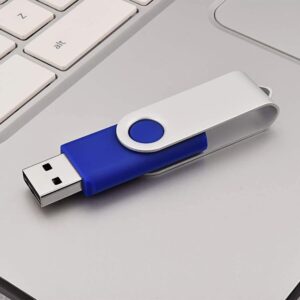Introduction to Software Installation
Software installation is a fundamental process that allows users to add new programs and applications to their computers, enabling them to perform a wide range of tasks. Software can be broadly categorized into applications, drivers, and utilities. Applications are the programs we use daily, such as word processors, web browsers, and games. Drivers are specialized software that allows the operating system to communicate with hardware devices like printers and graphics cards. Utilities are tools designed to perform specific functions, such as antivirus programs and file compression tools.
The importance of installing software correctly cannot be overstated. Installing compatible software ensures that your computer runs smoothly and efficiently. For instance, if you need to install software on Windows 11, you must ensure that the software is designed for this operating system. Similarly, if you are a Mac user, you must download and install software specifically tailored for macOS.
 —————Recommendations; Please continue reading below————— Space-saving Furniture Shop Now
—————Recommendations; Please continue reading below————— Space-saving Furniture Shop Now
If you want to maximise space in your home, office or home-office with flexible furniture that collapses, folds, and stacks to fit every room, you can click here to see the wide range of space-saving furniture. Click here to learn more >>>
One might ask, “Why do I need to install software?” The answer is simple: software extends the functionality of your computer beyond its basic capabilities. Whether it’s for productivity, entertainment, or system optimization, installing the right software can significantly enhance your computing experience. However, it’s crucial to be aware of the risks associated with software installation. Downloading software from untrusted sources can lead to malware infections, data breaches, and system instability.
In addition to ensuring compatibility with your operating system, it’s also essential to follow best practices when installing software. This includes reading user reviews, checking system requirements, and following the installation instructions carefully. By doing so, you can mitigate risks and enjoy the benefits that come with new software installations.
This introduction provides a foundational understanding of what software installation entails and why it is necessary. The subsequent sections will delve deeper into the specifics, guiding you through the various methods and best practices for installing software on different operating systems.
 USB for Windows 10 Install Recover Repair Restore Boot USB Flash Drive, 32&64 Bit Systems Home&Professional, Antivirus Protection&Drivers Software, Fix PC, Laptop and Desktop, 16 GB USB – Blue
USB for Windows 10 Install Recover Repair Restore Boot USB Flash Drive, 32&64 Bit Systems Home&Professional, Antivirus Protection&Drivers Software, Fix PC, Laptop and Desktop, 16 GB USB – Blue
Windows 10 Recovery and Repair Installation USB, can be used on Windows 10 PC | Windows 10 Bootable USB. Insert this USB. Boot the PC. Then set the USB drive to boot first to repair, recover, or reinstall Windows 10.. Does Not Include A KEY CODE, LICENSE OR A COA. Use your Windows KEY to preform the REINSTALLATION option.
About this item
- Does Not Fix Hardware Issues – Please Test Your PC hardware to be sure everything passes before buying this USB Windows 10 Software Recovery USB.
- Make sure your PC is set to the default UEFI Boot mode, in your BIOS Setup menu. Most all PC made after 2013 come with UEFI set up and enabled by Default.
- Does Not Include A KEY CODE, LICENSE OR A COA. Use your Windows KEY to preform the REINSTALLATION option
- Works with any make or model computer – Package includes: USB Drive with the windows 10 Recovery tools
Preparing for Installation
Before you proceed to install software on your computer, it is crucial to ensure that you are adequately prepared. The initial step involves verifying that your system meets the necessary requirements specified by the software. These requirements can typically be found on the software’s official website or within the installation package. Key specifications to check include the operating system version, processor type, RAM, and available disk space. For instance, if you plan to install software on Windows 11, ensure that your system aligns with the software’s compatibility needs.
Another essential preparatory step is to back up important data. This precaution helps safeguard your files in the event of any unforeseen issues during the installation process. Whether you use an external hard drive, cloud storage, or a local backup solution, having a recent copy of your critical data can prevent potential data loss.
Additionally, it is advisable to scan your computer for malware before installing new software. Malware can interfere with the installation process and compromise the security of your system. Utilize a reputable antivirus program to perform a thorough scan and remove any detected threats.
Administrative rights are often required to install software. Ensure that you have the necessary permissions to make changes to your system. If you are not the administrator of your computer, you may need to obtain the appropriate credentials or request assistance from the system administrator.
Lastly, check for available disk space. Installing software typically requires a certain amount of free space on your hard drive. You can check your disk space by navigating to your computer’s storage settings. For users installing software on a Mac, this can be found under the ‘About This Mac’ section in the Apple menu. Ensuring sufficient disk space prevents installation failures and ensures smooth operation of the new software.
By following these preparatory steps, you can significantly enhance the likelihood of a successful software installation, ensuring that your system is ready for the new addition.
Step-by-Step Process of How to Install Software
Installing software can often seem daunting, but with the right guidance, it becomes a straightforward task. This section aims to provide a detailed step-by-step guide to install software using various methods, ensuring you can follow along easily, regardless of your technical expertise.
1. Installation via CD/DVD:
Begin by inserting the installation CD or DVD into your computer’s optical drive. Wait for the auto-run prompt to appear, and then click on the “Install” button. If the auto-run feature is disabled, navigate to ‘My Computer’ or ‘This PC’, locate the CD/DVD drive, and double-click it to start the installation process. Follow the on-screen instructions to complete the installation.
2. Downloading and Installing from the Internet:
First, visit the official website of the software you wish to install. Locate the download link, often found under a ‘Downloads’ or ‘Software’ section. Click on the link to download the installer file. Once the download is complete, open the file to begin the installation. Follow the prompts, accepting the license agreement and selecting the desired installation options. This method is particularly useful for installing software on Windows 11 and macOS.
3. Installation using a USB Drive:
Copy the installation files onto a USB drive. Insert the USB drive into the computer where you want to install the software. Open the USB drive folder and double-click the installation file. The installation wizard will guide you through the setup process. This method is especially handy when installing software on multiple machines or when internet access is limited.
During any of these installation processes, you might encounter common issues such as the installation process freezing or error messages appearing. If the installation freezes, try restarting your computer and reinitiating the installation. For error messages, note the specific error code or message and refer to the software’s troubleshooting guide or support resources. Patience and careful reading of instructions can resolve most issues.
With these methods, you should feel confident in your ability to install software, whether you are using a CD/DVD, downloading from the internet, or using a USB drive. Mastery of these processes ensures that you can efficiently install a wide variety of software on both Windows and macOS systems.
 ROOFULL External CD/DVD Drive for Laptop USB 3.0 USB-C Portable CD Burner DVD Player CD/DVD-ROM +/-RW Disc Reader Writer with USB Port and SD Card Slot for Laptop PC Mac Windows 11/10 Linux Computer
ROOFULL External CD/DVD Drive for Laptop USB 3.0 USB-C Portable CD Burner DVD Player CD/DVD-ROM +/-RW Disc Reader Writer with USB Port and SD Card Slot for Laptop PC Mac Windows 11/10 Linux Computer
If your laptop or desktop lacks a built-in CD/DVD drive, this all-in-one B21-Y external CD/DVD player with hub is a solution worth considering. Enjoy a hassle-free experience with no complicated setup—simply plug the USB data cable into your computer’s USB type-A or type-C port, insert your disc, and it will be recognized automatically, after setting the appropriate region code (Region code is number #1 for U.S and CA video DVDs; CDs are not region-code limited), you can use media player or burning software to play or write your CDs and DVDs.
Post-Installation Tips and Best Practices
Once you have successfully installed software, there are several essential steps you should follow to ensure that everything operates smoothly. The first step is to configure the software settings according to your preferences. Most software applications offer customizable settings that allow you to tailor the functionality to better meet your needs. Take the time to explore the settings menu and adjust options such as default file locations, user interface preferences, and notification settings to optimize your user experience.
Checking for updates is another critical post-installation task. Software developers frequently release updates to fix bugs, enhance security, and add new features. Whether you have installed software on Windows 11 or a Mac, ensure that you enable automatic updates if available. Regularly visiting the software’s official website to manually check for updates is also a good practice to adopt.
Creating shortcuts can significantly improve your workflow by providing quick access to the software. On Windows 11, you can create a desktop shortcut by right-clicking on the software’s executable file and selecting ‘Create shortcut.’ On a Mac, you can drag the application icon from the Applications folder to the Dock for easy access.
Reading the software documentation is highly recommended. Most software includes a user manual or help section that provides detailed instructions on how to use the application effectively. Familiarizing yourself with this documentation can help you troubleshoot common issues and make the most out of the software’s features.
If you encounter issues with the software, such as it not working as expected, verify that the installation process was completed correctly. Ensure that all system requirements are met and that there are no conflicting applications. If problems persist, consult the software’s support resources or forums for assistance.
Lastly, if you ever need to uninstall software, follow the official uninstallation procedures to remove all associated files and settings from your system. This helps maintain a clean and efficient computer environment.
Now loading...






